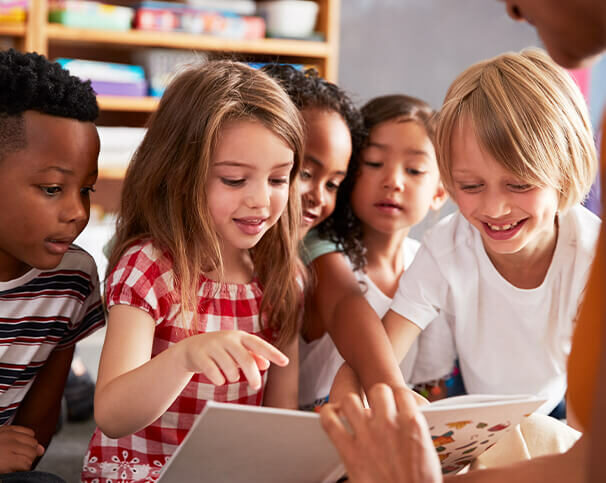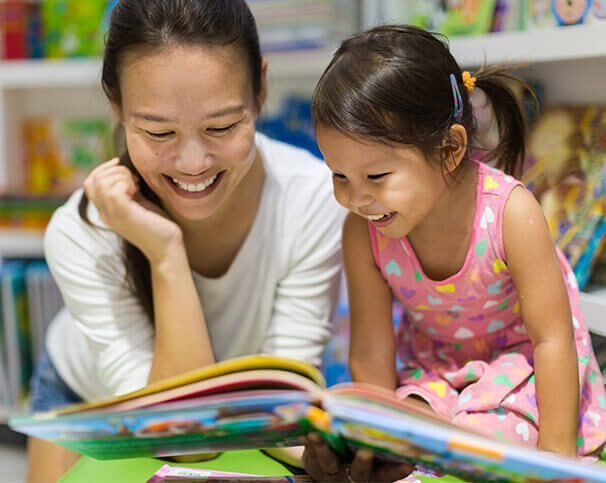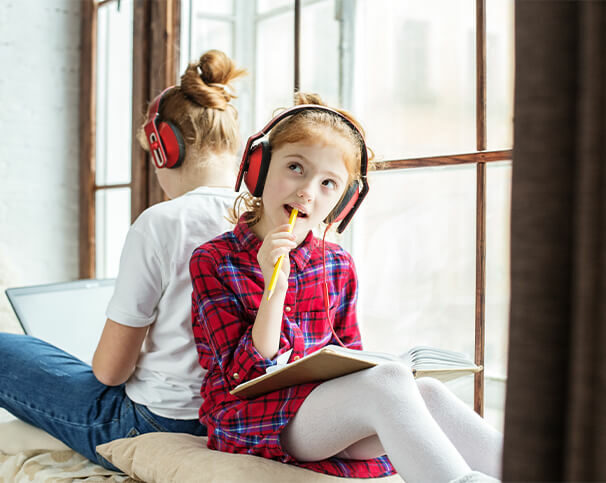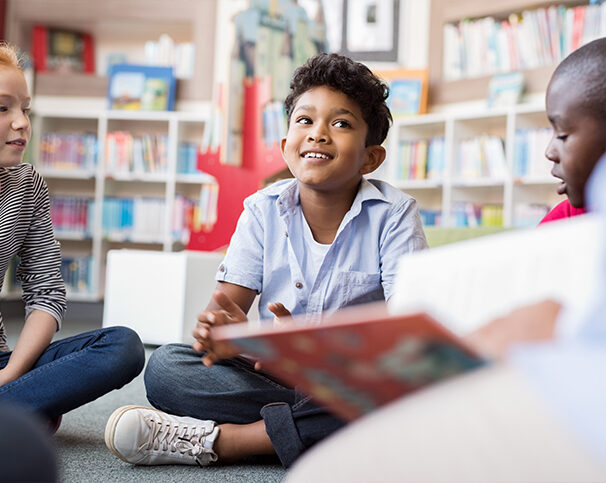Transforming Attitudes to Reading: Strategies for Reviving the Joy in Young Readers
How do attitudes to reading shape our engagement with books, and what can be done to foster a positive mindset? This article tackles how reader attitudes are formed and their impact on reading habits; it also suggests strategies to nurture a culture of reading enjoyment in schools. These concepts are key to helping us begin to revolutionise reading experiences, particularly for our youngest readers.
Key Takeaways
- Reading for pleasure significantly impacts a child’s educational success and facilitates cognitive, emotional, and social development
- The importance of fostering positive reading experiences among young readers is key
- Several factors influence children’s attitudes to reading, including family environment, school culture, and teacher influence
- These factors can work collectively to support or hinder a child’s reading habits and literacy skills
- Overcoming barriers to reading and promoting reading for pleasure through a diversity of strategies, technology, and community engagement can enhance literacy
- Improved literacy can, in turn, help to close the reading gap, especially for disadvantaged children
The Importance of Positive Attitudes to Reading
Imagine a world where every child, no matter their background or circumstances, has access to a wealth of books and feels inspired to dive into them. A world where reading for pleasure is not a chore, but a joyful journey to other worlds. Such a world is within our grasp, and the key to it lies in fostering positive attitudes to reading in children.

Far from merely being a leisure activity, reading for pleasure has the potential to significantly shape a child’s academic success and cognitive abilities, fostering a lifelong love for learning. But the benefits don’t stop there. Children who enjoy reading at a young age often exhibit greater happiness and mental well-being, as well as positive cognitive development, contributing profoundly to their emotional and social development. A 2023 study by researchers at the universities of Cambridge and Warwick in the UK and Fudan University in China, showed that reading is linked to important developmental factors in children. Reading for Pleasure Study by Cambridge University shows a positive reading experience can ignite creativity, language development, and even influence future generations to adopt similar habits.
The Role of Reading Enjoyment
Reading enjoyment goes beyond simply liking a good story. It’s about being immersed in a narrative, lost in a world of words, and coming out the other side with a newfound understanding or perspective. The impact is immense, extending far beyond the classroom walls. In fact, reading enjoyment is reported to be able to mediate socio-economic inequalities according to the OECD and other Government research: UK Government Research on Reading for Pleasure. It could be argued, it is therefore even more important for children’s educational success than their family’s socio-economic status.
A positive attitude towards reading not only supports reading achievement but also acts as a significant motivator. This motivation, in turn, affects a child’s literacy skills and lifelong learning habits. As children who enjoy reading are more adept at understanding the material they read, there’s a positive correlation between reading enjoyment and higher performance in reading comprehension. Significantly, independent reading, encouraged by reading enjoyment, can foster a self-reliant learning approach, positively impacting academic achievement across various subjects.
Building Vocabulary and Comprehension
Every time a child opens a book, they embark on a journey of discovery. They encounter new words, unique phrases, and different ways of expressing ideas, which contribute to vocabulary expansion and improved comprehension. Regular reading activity not only enhances these language abilities but also boosts speaking and communicative skills. Thus, a love for reading can become an essential pillar for academic success by building important reading habits and literacy skills.
Digital platforms can also promote reading. They can be used to help students learn new words, thus effectively supporting vocabulary development. Just as the use of pictures in books and comics aids vocabulary building and comprehension for young readers. Moreover, recreational reading strengthens background knowledge and subject-specific vocabulary, aiding comprehension across the curriculum.
Factors Influencing Children's Attitudes to Reading

Every child’s reading journey is unique, shaped by a myriad of factors. The influences range from the quality of instruction, the support they receive from family and teachers, even to tailored reading intervention programmes for underachievers. All these elements are crucial for academic success and the development of positive reading attitudes in children.
Maintaining these positive attitudes is linked to higher reading literacy and can help counteract the drop in reading frequency and attitudes that often occurs during transitions, such as moving from primary to secondary school. Let's look in more detail into these influences, beginning with the family environment and role models.
Family Environment and Role Models
Parents, as primary role models, wield enormous influence over their children’s reading habits. When a parent enjoys reading, it’s significantly more likely that their child will also enjoy the activity. Research indicates that 76% of children enjoy reading when their parents do. Book Trust Research 2024. The home environment plays a significant role as well. A supportive home environment for reading includes:

Accessible reading materials
A positive parental attitude towards reading
A cosy, well-lit, and quiet designated reading area at home
Access to a broad selection of books
These factors create a conducive environment to support children’s reading, fostering reading for pleasure and enhancing children’s reading enjoyment.
School Culture and Teacher Influence
The school environment plays a crucial role in shaping a child’s attitude towards reading. It’s during the transition from primary to secondary school that a noticeable decline in positive attitudes toward reading is often observed. Interestingly, girls tend to have more consistent and positive attitudes toward both leisure and academic reading compared to boys, who show a significant drop-off in positive attitudes towards leisure reading by the end of Key Stage 3. Teachers can play a pivotal role in fostering reading for pleasure. By modelling a diverse selection of books and establishing a school-wide reading culture, teachers can significantly influence even those students who do not enjoy reading in their spare time. Establishing a school reading culture is something that requires careful planning about how reading is valued across the curriculum and how spaces, such as the library are used by all departments.
Overcoming Barriers to Reading Enjoyment

Overcoming barriers to reading enjoyment is no easy task, but it’s an essential one. With reports indicating that reading enjoyment among children is at its lowest level in nearly two decades, there’s an urgent need for targeted strategies, highlighting declines in literacy levels and the enjoyment of reading. National Literacy Trust Research.
As children grow older, changes in reading attitudes can lead to decreased reading achievement. Using technology and digital media might be one way to engage reluctant readers in adolescence.
Engaging Reluctant Readers
It is important not to confuse reluctant readers with those who are unable to read. Those who are reluctant usually display a lack of interest in reading, avoid reading, display negative behaviours to avoid reading, or demonstrate frustration with reading. They therefore need to be encouraged to engage in reading of their own free will; this will only happen if they see some benefit or enjoyment in the experience
Creating enjoyable reading experiences can draw reluctant readers into the joy of reading. Here are some strategies to consider:
- Expressive read-alouds
- Engaging in play scripts
- Offering a variety of reading materials tailored to their interests
- Choosing books with characters that reflect their backgrounds and experiences
- Using audiobooks to provide a dynamic and expressive listening experience
These strategies can help capture the attention and stimulate the interest of reluctant readers.
Encouraging open discussions about books and fostering opportunities for children to talk about their reading can enhance their interest and engagement.
Utilising Technology and Digital Media
In our increasingly digital world, technology has opened new avenues for reading. Here are some ways that technology has made reading more accessible and attractive:
Reading apps
E-readers
eBooks
Audiobooks
Reading apps that support diverse student needs
These tools provide an alternative way to access literature, particularly for reluctant readers. Often children will be more willing to engage with text on a screen than with a book.
During times of disruption, such as the pandemic, educational technology played a crucial role in counteracting declines in reading enjoyment and daily reading levels. Digital media has also been shown to help children relax and learn new things, positively affecting their reading experiences and overall well-being.
Promoting Reading for Pleasure: Best Practices
Promoting reading for pleasure is a journey and, like any journey, it’s essential to equip ourselves with the right tools and strategies. Creating a reading-friendly classroom environment where learners feel encouraged to read often is essential for promoting reading for pleasure. And not just an English classroom! Additionally, linking reading with enjoyable activities, such as setting up movie nights based on books, can significantly enhance the reading experience and encourage students to read more.
Informal book talks and student-led discussions about books can generate a community around reading, increasing motivation and fostering a habit of reading for enjoyment. Providing guidance on top tips to promote reading at home helps to extend the reading culture beyond the classroom and engage parents in their children’s reading journey.
Creating a Diverse and Accessible Reading Environment
A diverse reading environment is like a treasure chest, filled with books that reflect a rich diversity of realities, experiences, and voices. These books are essential to address the lack of representation in children’s literature and ensure every child can see themselves in the stories they read.
Fostering partnerships with parents, local libraries, and the community at large can motivate children to read and cultivate lifelong reading habits. Inclusive book displays and communications in school environments, along with access to well-resourced school libraries, are pivotal in developing media literacy, personal growth, and a propensity for reading amongst students. It is also important that media texts are valued just as much as books because many young people now read and get much of their information online.
Encouraging Independent Reading and Choice
Empowering children to choose their reading materials can provide them with a sense of control. This can increase their motivation and demonstrate that reading can be an enjoyable activity. Some ways to promote independent reading and cater to diverse interests include:
Recommending books aligned with a child’s passions
Providing various materials that reflect students’ interests and abilities
Respecting children’s reading choices
Include media resources as well as a variety of book styles and genres
By implementing these strategies, we can foster continued enthusiasm and engagement in reading.
Dedicated time for independent reading during the school day, along with creative activities like book clubs and reading logs, can help maintain student engagement and accountability.
Supporting Disadvantaged Children and Closing the Reading Gap

Supporting disadvantaged children and closing the reading gap is a crucial step towards ensuring equal access to literacy for all children. Providing financial and practical support to families, such as free school meals, can overcome economic barriers to book ownership, with statistics showing that 1 in 5 children between the ages of 5 and 8 in the UK does not own a single book. According to the National Literacy Trust this is greater than before the pandemic. Primary school libraries serve as a key intervention in boosting attainment and narrowing the gap between disadvantaged and SEN children and their peers.
Reading Programmes and Initiatives
Reading programmes like the Young Readers Programme, run by the National Literacy Trust, aim to instil a love of reading in young people from disadvantaged backgrounds. Designed for schools in deprived areas or with children experiencing poverty, these programmes encourage children to read and provide brand-new books to children, often marking the first book they own. This programme received the Corporate Engagement Gold Award and Bronze award for educational excellence in 2023. Participation in the programme is free due to external funding and local volunteer support, making it accessible to schools serving disadvantaged communities.
Aside from the Young Readers Programme, the National Literacy Trust runs other initiatives like establishing more school libraries and distributing diverse books to underprivileged children. Primary school libraries also have a role in supporting disadvantaged children.
The Role of School Libraries
The Lasting Impact of Positive Reading Attitudes
Developing positive reading attitudes can leave a lasting imprint on a child in terms of their:

academic success
better mental health
socio-emotional development
life satisfaction
These attitudes play a pivotal role in early education, laying the foundation for future reading success and knowledge acquisition.
Communities also benefit as individuals who engage in reading for pleasure exhibit better decision-making abilities, empathy, and are more likely to value other people and the environment. The satisfaction garnered from reading for pleasure can enhance social connections and foster new networks.
The influence of reading for pleasure on children’s future opportunities and life chances is profound, often outweighing the effects of their socioeconomic status or performance in exams. Reading for pleasure should be viewed as a powerful educational tool, essential for boosting educational standards and students’ psychological resilience.
Summary
n conclusion, fostering a love for reading among children is a journey that requires commitment from schools and home, working together, creativity, and a deep understanding of what sparks joy in young readers. With strategies ranging from creating diverse and accessible reading environments to engaging reluctant readers, and from supporting disadvantaged children to promoting reading for pleasure, we have the power to transform attitudes to reading and revive the joy in young readers. So let’s open a book, dive into a new adventure, and inspire a generation of joyful, lifelong readers.
Frequently Asked Questions
Reading for enjoyment is referred to as “reading for pleasure” or “independent reading.” It is the act of reading voluntarily and for the satisfaction one gets from it.
Attitudes in learning consist of consistent behaviours such as engagement, effort, collaboration, and enthusiasm that demonstrate a commitment to achieving one’s best. A positive learning attitude is self-initiated, stemming from natural curiosity and motivation, and is crucial for both personal and professional growth.
A literacy attitude is the reader’s focused commitment to pursuing knowledge and deriving personal connection or pleasure from engaging with text. This positive attitude enables meaningful learning from text.
To develop a positive attitude towards reading, consider planning reading activities with younger or older students, such as reading clubs or peer reading sessions. Additionally, create a classroom environment that promotes reading and encourages discussion about books.
Reading for pleasure can significantly impact a child’s academic success by boosting their cognitive abilities and cultivating a lifelong love of learning. This is backed by research and has far-reaching benefits.







